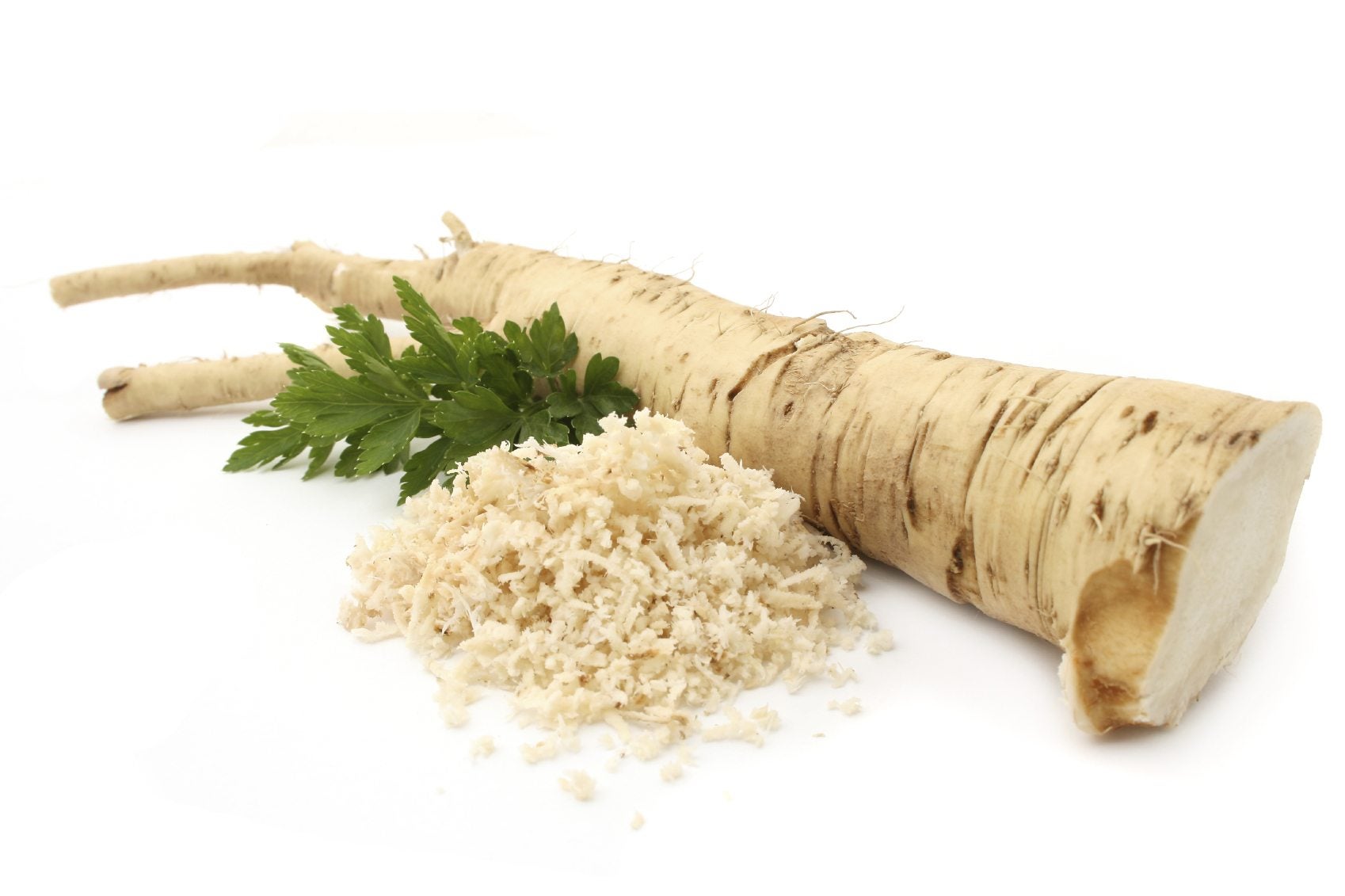How To Make Horseradish Hot: Why Is My Horseradish Not Hot

I like things hot, as in spicy hot. Four star, bring it on, hot. As you can imagine, I have a fondness for horseradish. This has me pondering about how to make hot horseradish.
How to Make Hot Horseradish
Horseradish not hot? I feel you. I have had dishes where the horseradish was not hot. Perhaps there wasn't enough horseradish sauce or maybe the sauce was old. Whatever the case, there are some tips to making spicy horseradish. Horseradish is a hardy perennial primarily cultivated for its large taproot -- the source of all that delicious heat. When this taproot is grated or crushed, the root cells release pungent oil. You can grow it yourself or purchase it in the produce section of the market. Horseradish needs to be planted in rich, moist, deeply tilled loam or sandy loam soil. It is started by side roots or secondary roots called sets, not by seed. The soil pH should be between 6.0 and 6.8, which will aid the plant in absorbing boron, important to healthy tap roots. Too much nitrogen, however, will encourage foliage growth and little root growth.
Spicy Horseradish Tips
When purchasing horseradish, look for firm, unblemished roots. When cut, the root should be creamy white. The root can be stored for several months between 32-38 degrees F. (0-3 C.), but for the hottest horseradish sauce, use it as soon as possible. The heat begins to fade the longer it is stored. Similarly, if you have horseradish sauce or cream that isn't hot, the likely reason is that it has been sitting around for too long or it was made incorrectly. The sauce itself should be creamy white and will darken and lose potency as it ages. To prepare your own horseradish, work either outside or in a well-ventilated room. Peel the roots and either slice or grate them. Sliced root can be ground in a food processor, blender, or meat grinder with a small amount of water. You can grate horseradish either by hand or with the processor's grating blade with a bit of water. If it's too runny, drain some water off; or too thick, add a bit more. Be careful. The fumes from the root can be potent! Fresh crushed horseradish is at its strongest but once it is exposed to air, the pungency begins to wane. The key to making horseradish hot, and I mean HOT, people, is to finish it off with the next ingredient -- vinegar. Vinegar stabilizes the flavor and when you add it, will affect the spicy outcome. If you add the vinegar too soon, the horseradish will be milder in flavor. For “knock your socks off” spicy, be sure to wait three minutes before adding 2 to 3 tablespoons (30-44 ml.) of (5% strength) white distilled vinegar and ½ teaspoon (2.5 ml.) salt for each cup of grated root. So, to achieve the hottest horseradish, use the freshest root possible and be patient; wait three minutes before adding the vinegar and salt. Also, once your horseradish is complete, proper storage is crucial to maintain that heat. Store it in an airtight container in the fridge for four to six weeks or in the freezer for six months or even longer.
Sign up for the Gardening Know How newsletter today and receive a free copy of our e-book "How to Grow Delicious Tomatoes".

Amy Grant has been gardening for 30 years and writing for 15. A professional chef and caterer, Amy's area of expertise is culinary gardening.
